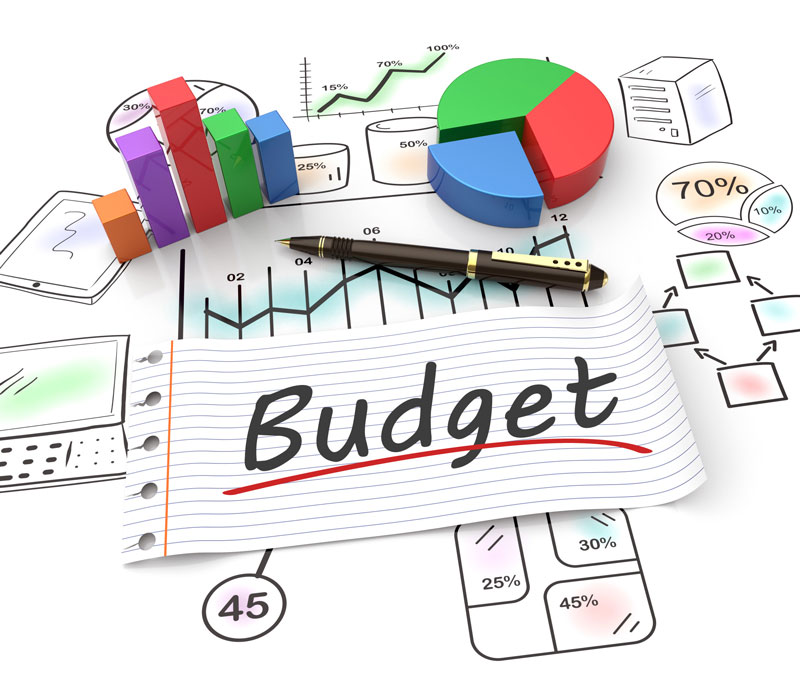
A budget planner worksheet is a great way to ensure you stay on track financially and make the most of your income. It helps to create a budget that is tailored to your individual needs and goals. The worksheet can help you determine how much money you have available and how to prioritize spending.
Budget Planner Worksheet
You can design your budget using a tool called Budget Planner. For example, a worksheet or template. A productive budget planner assists you in selecting the most efficient use of your funds while eliminating or minimizing debt. The 50/30/20 majority budget proposes allocating 50% of your income to needs, 30% to wants, and 20% to savings and debt servicing.
Also, if you are using a budget template and it’s not helping you, you should consider budget planning apps. Since most applications are synchronized with your financial records, they can track and organize your expenses. Budgeting may not be sufficient if you’re trying to get a hold of your finances or struggling to make your perfect budget plan a reality.
How to Use Any Budget Planner Tool or Spreadsheet?
 The budget planner spreadsheet is based on sound budgeting theory and precisely maps your cash inflows and cash outflows over a year. It then assists in determining if the budget balances.
The budget planner spreadsheet is based on sound budgeting theory and precisely maps your cash inflows and cash outflows over a year. It then assists in determining if the budget balances.
There are the following things to discuss regarding budget planning:
Assemble invoices and receipts
Refrain from guessing or estimating. The effectiveness of budget on accuracy and expenditure, so the only way to be certain is to have all your bills and records in front of you in black and white. While obtaining a sense of your monthly expenditure is important, keeping at least three months' worth of receipts and bills so you can keep records of all your quarterly costs, such as your Tv subscription or water bills.
Fill out the free worksheets for a budget planner.
Choose between the Excel or Open Office version of the application, depending on whether you like spreadsheets or a good old-fashioned printout. It always shocks me how much money you spend on many different things. The worst part is how much cash you spend on them. Even if you might not like the outcome, you must answer every question honestly. Remember that it's preferable to predict larger than smaller so that you have some room for error.
Be as precise as you can with your calculations.
Trying to deceive yourself by calculating your expenses too low can be tempting. This is a MoneySaving sin, for which you shall pay. Try to be precise, and if you're unsure, guess greater rather than smaller so you don't run out of money. Be careful not to double-count expenses because certain spending categories intersect.
Separate "debt" and "spending" on credit cards
The credit card section should include the cost of paying off your current credit card bills. Don’t confuse this with spending, in which you use your credit card as usual and make a full payment.
Verify your pension information.
Pension contributions made by cheque or automatically deducted from your bank account every month should be listed under the expense category. When filling out the income section, you should only enter the net amount of pay you get after all deductions. However, if your pension is taken directly from your salary as a monthly payment, you should not include it.
Don't forget to account for "one-off" expenses.
Everyone has one-time expenses that impact how we manage our budget, whether for a vacation, a car, or a special birthday treat.
Why Is It Necessary to Plan a Budget?

The right budgeting is a very accurate instrument to analyze your finances. There are two ways listed below:
Do I go beyond my income each month?
It's simple to judge that you're overpaying if you're depleting your savings or accruing debt. But before you can solve this, it's critical to have a precise understanding of the scope and magnitude of the issue. The Budget Planner is made to provide you with a thorough analysis of your money because significant overspending might result in a debt cycle and serious problems.
What kind of budget do I have?
Once you know where your money is going, you can alter and prioritize your spending to stay within your limitations. Although the budget planner offers tools to help you choose how to set priorities within your resources, the real challenge is maintaining them. The piggy bank method is intended to assist you in accomplishing that.
Importance of Free worksheet for Budget Planners
Spreadsheets for budgeting are a fantastic tool for keeping track of our finances. They assure us that we stick to our spending plan and assist us in conserving money. Using a budgeting spreadsheet, we can better manage our finances and make effective long-term plans. Being in charge of your finances might provide security during these challenging moments. Worksheets and spreadsheets for budgeting enable us to make confident financial decisions.
Free Worksheet for Budget Planners
Budget spreadsheets are a wonderful option if you need something more in-depth than a worksheet. You may use these spreadsheets to budget, monitor your expenditure, and produce thorough reports. You can better understand your finances by maintaining all your financial records in one location and keeping it updated regularly.
Budget Spreadsheet Templates
Using spreadsheet software like Google Sheets or Microsoft Excel can be simpler to utilize a spreadsheet template than to build your own from scratch.
In these various programs, you can find the following pre-made templates:
Google Sheet templates
A variety of budgeting template choices are available in Google Sheets. They have annual and monthly budget spreadsheet templates as follows:
- For those who are new to budgeting as well as those looking for an easy
budgeting solution, the monthly budget template offers a simple approach.
- A more detailed budget is produced using the yearly budget template, which also considers predicted savings and income in addition to existing revenue and savings.
Microsoft Excel templates
A selection of free budgeting templates is available from Microsoft Excel, including the simple monthly and domestic spending budgets. Anyone can obtain their premium templates, consisting feature the following:
- monthly budget for college
- budget for yourself
- Family financial planner
Final Takeaway
An individual may use a personal financial spreadsheet to take stock of his financial status and aid in long-term spending planning, usually over one month. You can make budgeting as straightforward or as complex as you choose.



